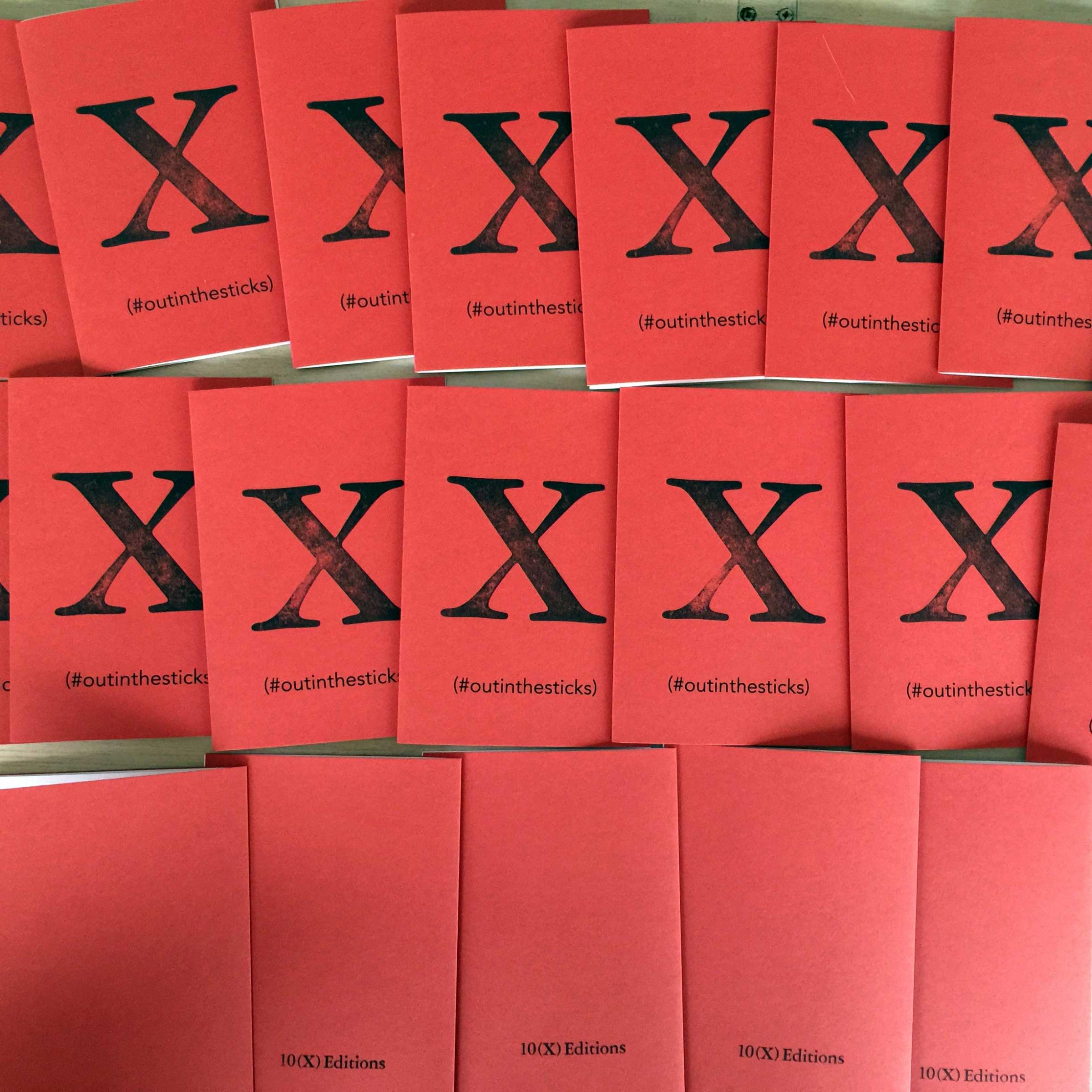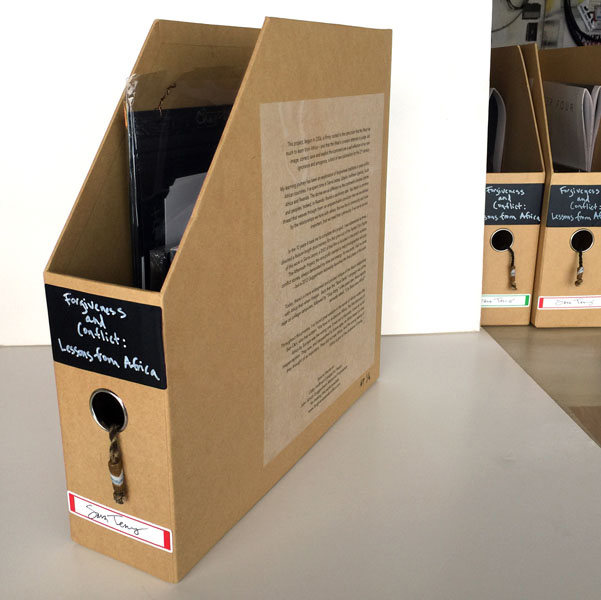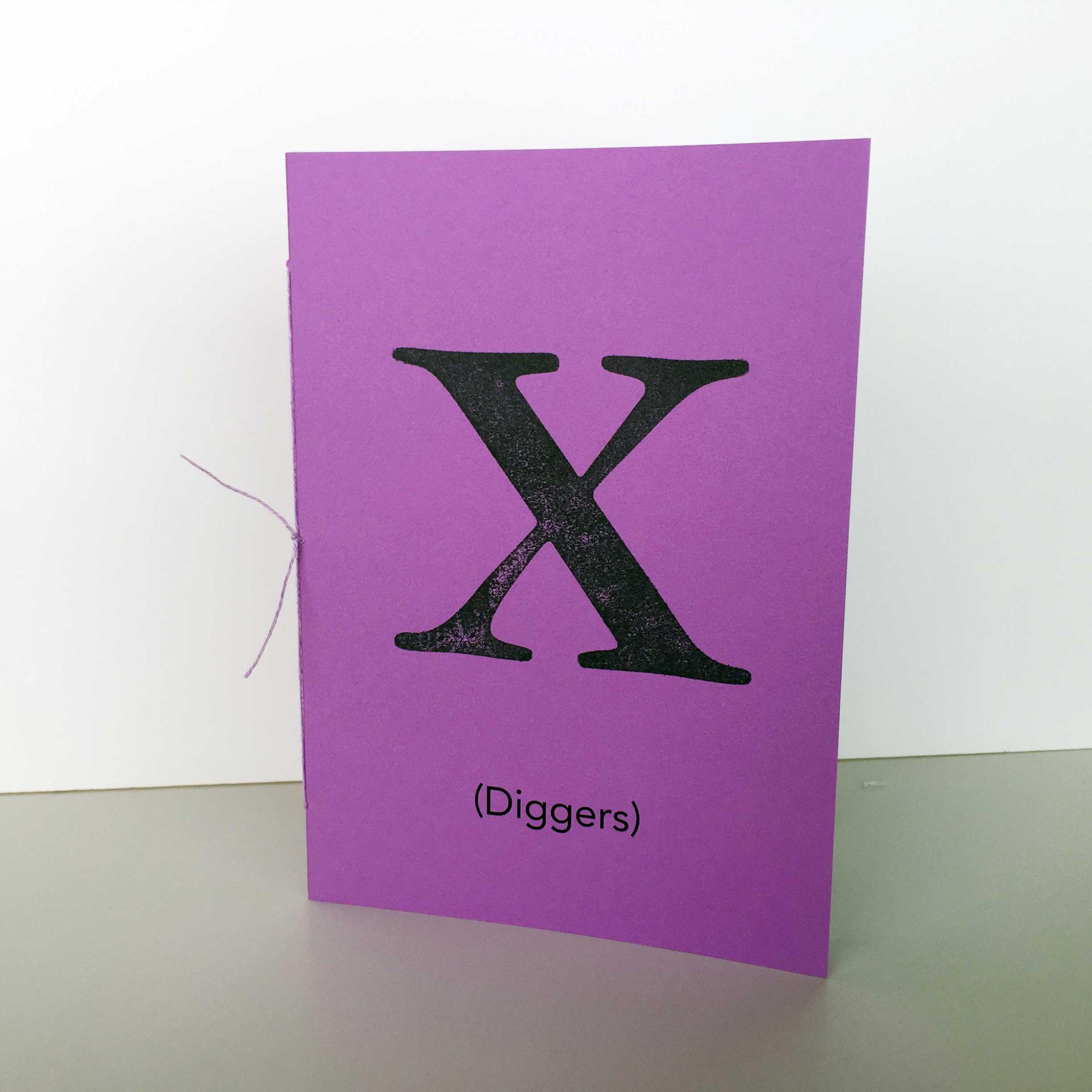
When Sara Terry started printing handmade limited-edition photobooks of her work – each edition displaying only 10 images of her choice – she never expected it to attract an audience beyond her close friends. Yet, the editions, called 10(X), have caught the eyes of award-winning photographers and photo editors who are now collaborating with her. Terry speaks to TIME LightBox about the origins of the project.
Olivier Laurent: What is 10(X)?
Sara Terry: 10(X) Editions is what I call a “micro” press – I publish small, handmade and very limited edition photo books, signed and numbered. 10(X) started earlier this year with handmade, 5×7 inch accordion books of my own work, 10 titles in total, with 10 original prints in each book, and 10 copies in each edition. After a month or two, I decided to add high-quality digitally printed copies of each title to offer a lower-priced version of the work, with each title in an edition of 50. I hand bind them and stamp the covers; like the accordion books, they’re also numbered and signed. Then within another month or so, I decided to add 10 “guest artists” — photographers who are friends and whose work I admire.

Where did the idea come from?
I’ve been obsessed with handmade, small edition photo books for the past few years — in part because I’d been thinking through the artist’s book I wanted to make for the post-conflict project I’d done in Africa, and won a Guggenheim for. When I finally finished the work and started making the artist’s books last fall, I made six different physical chapters for the book, each one a book in its own right, and the one that I really loved making was an accordion book of 10 prints for the chapter on Rwanda. It was a very calming practice — making the books and concentrating intensely on the work and the images, and not really thinking about anything else.
For quite a while I’d also been feeling overwhelmed by the tsunami of imagery that’s out there in the world today. I love my Instagram feed, and I use my iPhone as a serious camera. But like many of my friends, I don’t like the constant social media nagging that goes on in my head — how many likes, how many followers. That’s not why I became a photographer. That’s not why I love photos. I found myself craving small visual conversations, that didn’t depend on large numbers of people liking or following or buying. So I limited my Guggenheim/Africa work to an edition of 50 books — and then the idea for 10(X) came a few months later, literally out of the clear blue. It just sprang into my head one day, as a way that I could build visual conversations that didn’t depend on a publisher or a gallerist “approving” my work and agreeing to do something with it. I could start my own press, put it on a website and let people know about it. If I got tired of a title, I could just take it down and put up another one. It doesn’t require a huge sum of money to do this. It’s a hugely satisfying space where I can say, “These photos, these 10 here, they matter.”

How do you select the guests for the 10(X) series?
10(X) is such an organic process. Photographers are starting to write to me now, asking if I would be interested in doing books with them — and I find that so incredibly flattering. But I’m not trying to be a book publisher. And as I said to someone, 10(X) isn’t about serious things — personally serious and meaningful, yes, but not editorially serious. So far, I’ve worked pretty much with photographers I know — the work mainly comes from their Instagram feeds, or from personal projects. My choices are really intuitive — I have to want to get my hands on the work, I have to feel there’s a sequence to be made, a poem that can be written from the images. Because that’s what I’ve come to realize about 10(X), the books are all small visual poems.
How do you work with these guests on the edit and production of the books?
I warn everybody in advance that I’m a bit of a tyrant when it comes to sequencing — only because that’s the part I really, really love. But that said, it is a collaboration. The photographer might have an idea for the subject they want to see as a 10(X) book, or I might have a suggestion. Then I make a wide edit of the work and share that with the photographer, and ask if they’d like to include any other photos. Generally, I always try to make sure to get in the photographer’s favorite picture from a project — and I try to avoid pictures they don’t like. Then I spend time with the wide edit, looking for the visual threads that tie them together. The final word is mine when it comes to sequencing and everyone respects that — but I think they would all say it’s a respectful process. The bottom line is that I don’t want to make books that either one of us is unhappy with — if it ever comes to a point where a photographer doesn’t like the sequence, then we just don’t do the book. It’s more important to me to maintain relationships. And so far, that’s never happened.
Will you continue the series with more guests?
I’ll continue next year for sure. The great thing is people are starting to collect the series, even pre-ordering the whole year in advance. The Museum of Fine Arts, Houston, has purchased a complete set of the 2016 guest artist titles and also a complete set of my own 10(X) books. Not surprisingly, I’m doing 10 a year of my own, and 10 a year of guest artists. I’ve already started talking to photographers about 2017. But that’s as far as I can commit — the moment this stops being a pleasure, or becomes something that takes away from my own work as a photographer, that’s when I’d finish. I’ve learned a lot from running The Aftermath Project — which has been an incredible thing to do for a decade. But most of my time with that has involved raising money to support other photographers’ work, and promoting it. It hasn’t kept me from my own photographic practice, but it has overwhelmed it at times. Right now, 10(X) is the perfect balance.

How has the experience of running these editions informed your own work, both as a photographer and as an editor?
I think I learn with every book, whether it’s my own or a guest artist’s. There’s something about creating a 10-image edit, a perfectly distilled essence of a body of work, that’s so challenging and at the same time so rewarding. As a photographer, I feel like my work is in the middle of a pretty big shift — documentary work is still my foundation, but with my post-conflict work in Africa, it’s begun to be more metaphorical, and more personal. You can see that shift in the progression of the Africa work over the years it took me to make it. The 10(X) artists and their work are all feeding those changes in how I see; it’s a genuine gift they’ve each given me in our work together. Having to look so closely and carefully at a wide selection of images, and narrowing them down to just 10, is a constant process of learning and seeing in new ways. I never studied photography; my background is in print journalism, so I feel I’m always learning what it means to truly see a photo, to make an image. As an editor, the 10(X) books have helped me — have challenged me — to wrap my heart around what the photographer is trying to say, not just my head. These books are different, they’re personal, they’re poetic. And it’s a privilege that the wonderful photographers who’ve actually created these images allow me to shape them, to make a poem using their photos as the “words.” There are so many different ways these edits could be done — so many choices to make in selecting just 10 photos — and the 10(X) books represent one way of seeing the work. I’m definitely a better editor — more nuanced, more concise.
Sara Terry is a photographer and publisher. See more of her 10(X) books on her website.
More Must-Reads from TIME
- Donald Trump Is TIME's 2024 Person of the Year
- Why We Chose Trump as Person of the Year
- Is Intermittent Fasting Good or Bad for You?
- The 100 Must-Read Books of 2024
- The 20 Best Christmas TV Episodes
- Column: If Optimism Feels Ridiculous Now, Try Hope
- The Future of Climate Action Is Trade Policy
- Merle Bombardieri Is Helping People Make the Baby Decision
Contact us at letters@time.com